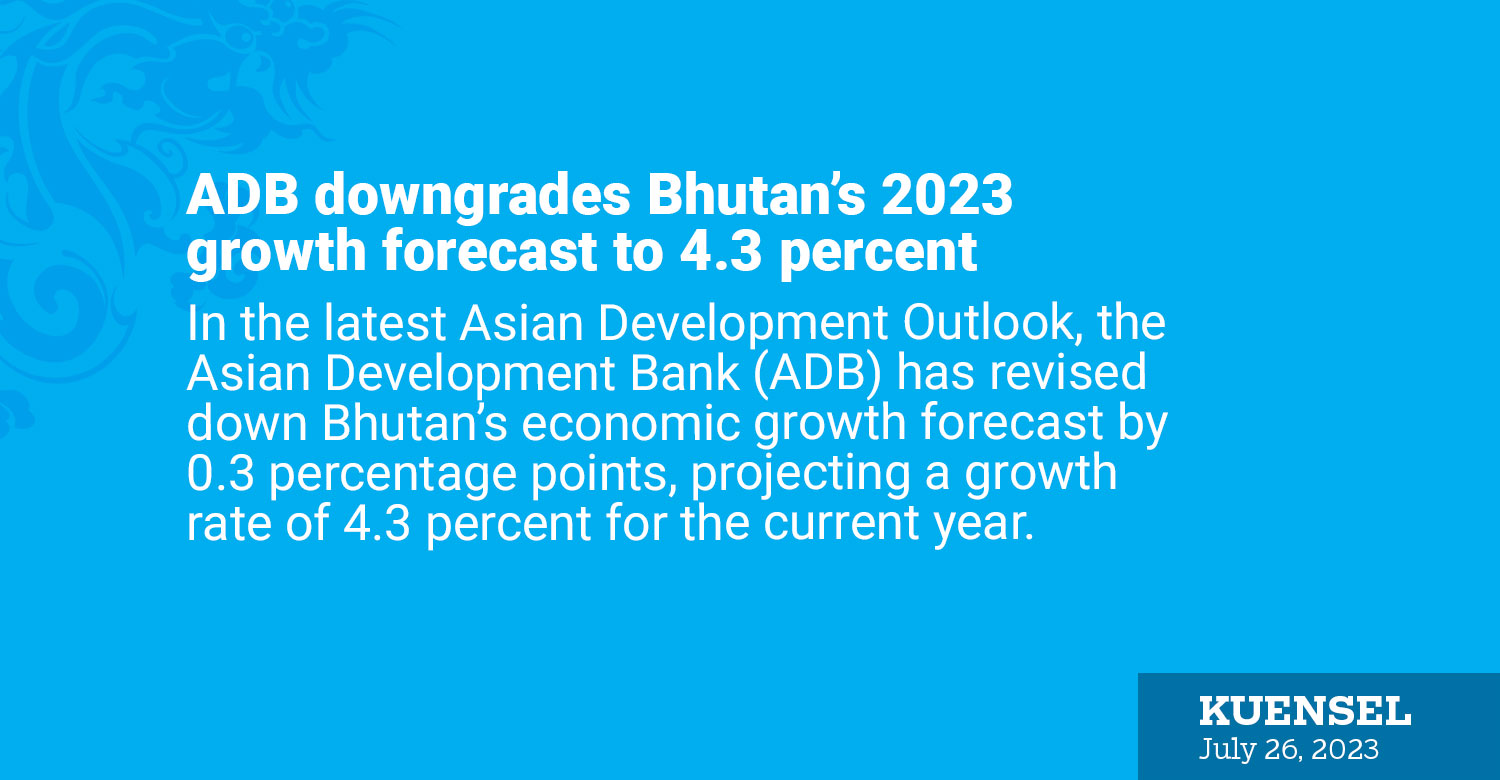Thukten Zangpo
In the latest Asian Development Outlook, the Asian Development Bank (ADB) has revised down Bhutan’s economic growth forecast by 0.3 percentage points, projecting a growth rate of 4.3 percent for the current year.
This revision comes in the wake of the bank’s earlier projection in April, which had predicted a slightly higher growth rate of 4.6 percent for 2023, subsequently declining to 4.2 percent in the following year.
Sonam Lhendup, the Economics Officer of ADB’s Bhutan Resident Mission, attributed the downward revision to a decrease in hydropower production during the initial four months of the year.
Hydropower production witnessed an approximately 7.7 percent dip during this period, amounting to 1.38 billion units compared to 1.49 billion units of electricity generated in the same period last year.
The shutdown of the Tala hydropower plant for underwater infrastructure repairs from January to March 16, along with unfavorable hydrology, contributed to the decline.
The construction sector is also expected to experience contraction by 4 percent, rather than the previously projected 1 percent growth in April 2023.
This was a result of credit suspension for the sector from June 9 this year due to concerns related to foreign currency outflow, high credit concentration, and non-performing loan risks.
The construction and hydropower which falls under the industry sector contributes to 28 percent to the country’s gross domestic product.
ADB’s April report had foreseen a decline in investment influenced by emerging domestic macroeconomic issues, upcoming national elections in December, and the transition to a new government’s five-year plan, all impacting growth for this year and the next.
However, the Bank anticipates that hydropower production’s normalisation and the commissioning of two new hydropower plants, Punatshangchhu-II and Nikachhu, would bolster sustainable growth by 2024.
Additionally, Bhutan’s agriculture sector is expected to experience a slowdown, with the growth forecast being revised down from earlier 3.2 percent and 2.6 percent in 2023 and 2024 respectively, attributed to declining credit in the sector and erratic rainfall patterns.
On the trade front, wholesale and retail trade is anticipated to contract due to sustained import restrictions aimed at easing pressure on foreign exchange reserves.
Mining and quarrying could also face impediments due to changes in export policy.
ADB had previously reported an expected moderation of inflation in Bhutan to 5.5 percent in 2023, thanks to the government’s food security initiatives and the anticipated stability in domestic food prices that would counterbalance imported inflation.
However, the bank’s recent update indicates a further decline in inflation this year following an unexpected drop in fuel prices.
The country’s fiscal deficit expansion and dwindling foreign exchange reserves, however, remain key concerns highlighted by the Bank.
Meanwhile, for India, ADB retains its growth forecast of 6.4 percent for the current year, citing robust domestic demand as a key driver supporting the region’s recovery. India’s inflation is also expected to decline to 3.6 percent this year due to a drop in fuel and food prices.
Looking at the broader picture, ADB maintains its growth projections for East Asia and South Asia for this year at 4.6 percent and 5.5 percent respectively, with China expected to expand by 5 percent and India by 6.4 percent in 2023. In 2024, China’s growth rate is projected at 4.5 percent, while India’s is expected to be 6.7 percent.


